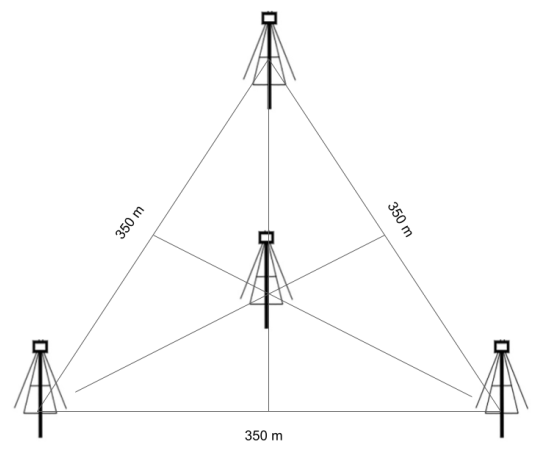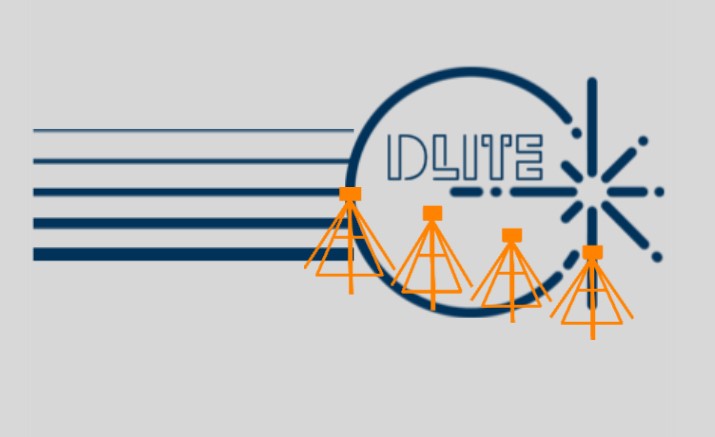The DLITE Project
Deployable Low-band Ionosphere and Transient Experiment (DLITE) arrays are comprised of four dipole antennae that operate at 30-45 MHz in the radio band, below FM radio stations. DLITE is capable of resolving the brightest radio sources, meaning DLITE is able to tell the difference between two sources that look very close together in the sky. DLITE was designed to probe the ionosphere, a layer of electrons in the ionosphere created by solar radiation. Understanding the ionosphere is not only an interesting science endeavor to understand our Earth and Sun, but it is also vital to protect our telecommunications networks here on Earth.
Observing Targets and Science During the Eclipse
The primary targets for DLITE are the so-called A Team: Caseopia A, Cygnus A, Hercules A, and Virgo A. These radio bright sources allow us to use DLITE to probe different lines of sight through the ionosphere and see how radiation from the sun, weather patterns, and other phenomena interfere with the composition and the turbulence of the ions in this layer of our atmosphere. In this sense, the A-Team sources are like bright flashlights being pointed toward you in a dark, dusty room that allows you to see the movement and density of the dust between you and the flashlight. During the eclipse, we will be using Caseopia A (Cas A), to observe how the sudden removal of radiation from the Sun during the eclipse will affect the ionosphere. DLITE can also see the sun, which emits not only optical light which we can see with our eyes, but in many other wavelengths, like ultraviolet, infrared, and radio. The sun has an atmosphere, although it is very difficult to study this region of the sun because the light it emits is minimal compared to the other regions. However, during a total solar eclipse, the moon covers the sun, making observations of the sun’s atmosphere possible. Using our DLITE telescope in the path of totality, we aim to observe and constrain the radius of the radio emission in the sun’s atmosphere at 42 MHz.
The Ionosphere
During the eclipse, not only will we be able to observe the sun’s atmosphere, but also how radiation from the sun affects the atmosphere of our planet. The ionosphere is a layer of the atmosphere that is created by the high energy radiation from the Sun, like ultra-violet light, breaking down atoms and molecules to form the layer of free-floating electrons. The height of the ionosphere changes throughout the course of the day, with increasing radiation from the sun during the daylight hours causing the ionosphere to become thicker as more and more free electrons are created. As the sun sets, the electrons recombine with their atoms and molecules, and the height of the ionosphere decreases. However, we don't know what will happen to the ionosphere when the solar radiation is suddenly removed, such as during a total solar eclipse. DLITE Ohio's observations during the total solar eclipse will be a unique look into these interesting phenomena.

DLITE Design
DLITE telescopes are comprised of four antennae arranged in a triangle, with one antenna at each point of the triangle and the final antenna in the middle. Each antenna has four metal blades, one aligned with each of the cardinal directions. The East-West/North-South pairs of blades are referred to as polarizations, and make sure that we can capture all directions of radio light. Just like optical light, radio light is an electrical wave and magnetic wave oscillating at a 90-degree angle from one another. Like polarized sunglasses, each pair of blades only catches one direction in which the light oscillates. The DLITE antennas are very far separated from one another, allowing us to resolve objects in the sky, meaning we can tell the difference between light from the sun and light from one of the A-team sources. The antenna are connected to our processing computer by up to a quarter mile of coaxial cable, allowing us to correlate all of the signals together into one coherent image of the sky.
Long Term Plans for DLITE Ohio
DLITE Ohio will be left up and running after the eclipse, with plans to observe both the ionosphere and the sun on a long term basis. Additionally, Observatory Park is home to a seismograph machine, which may enable us to one day install an earthquake-activated observing trigger for DLITE. Earthquake frequency in Eastern Ohio is increasing, and earthquakes are known to affect the ionosphere, making this an interesting science case.
